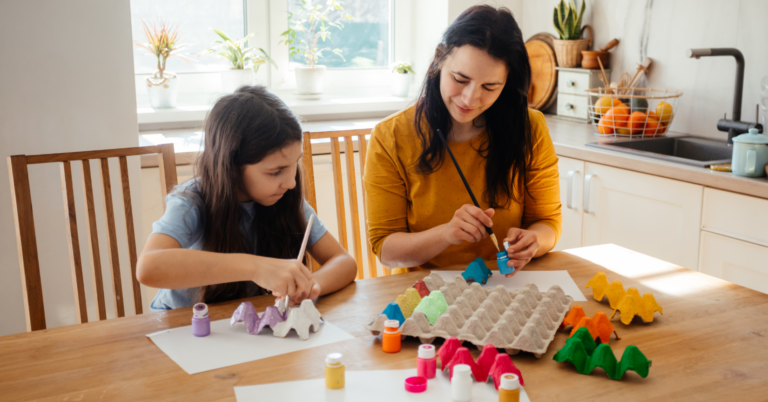Understanding your child’s learning style can make a significant difference in their educational journey, especially when it comes to kinesthetic learners who learn best through hands-on activities and physical movement. These learners require unique strategies to grasp concepts effectively.
Teaching a kinesthetic learner at home can be a challenging yet rewarding experience. Through years of navigating this terrain, I have discovered some proven strategies that are highly effective in facilitating the learning process for these active learners.
In this article, we’ll explore 7 proven strategies for teaching your kinesthetic learner at home. Each of these strategies is designed to tap into your child’s natural inclination for movement, turning every learning experience into an engaging and enjoyable adventure.
The key to successful home education for a kinesthetic learner lies in understanding how to transform conventional teaching methods into interactive, physical activities. So, what are the most effective ways to achieve this? Let’s delve into that question next.
1. Incorporate movement into learning
Kinesthetic learners thrive when they can express their understanding through physical activity. Transforming lessons into movement-based activities is a key strategy to engage this type of learner.
For instance, you could use dance to teach mathematical concepts. The rhythmic patterns in a dance sequence can represent different numbers or mathematical operations. This makes learning fun and memorable for your child.
You could also use physical games to teach language and literacy skills. A game of word relay where your child has to run to a chalkboard and write a word related to the topic you’re discussing can reinforce their understanding.
The goal here is to tie movement directly to learning. The more you can integrate physical activity into your lessons, the more likely your kinesthetic learner is to retain the information.
2. Use hands-on experiments
Kinesthetic learners often benefit from hands-on experiences. This is because they learn best when they can touch, feel, and manipulate objects to understand concepts.
If you are teaching about plants and their life cycle, consider starting a small garden at home. Allow your child to plant seeds, water them regularly, and observe the growth process. This way, they can connect the learning materials with real life experience.
When it comes to understanding scientific concepts, consider conducting simple experiments at home. These experiments can help your child understand various scientific theories and laws in a fun and engaging way.
The key is to provide concrete experiences where your child can apply what they’ve learned. This method not only makes learning engaging but also helps your child remember and understand the material better.
3. Leverage technology for interactive learning
In today’s digital age, technology offers a myriad of tools and resources that can aid kinesthetic learners. Interactive educational apps, video lessons, and virtual reality experiences can transform learning into an engaging and immersive experience for your child.
Educational apps often incorporate games, puzzles, and simulations that require interaction and problem-solving, making them a perfect fit for kinesthetic learners. These apps can make topics like math, science, or language arts more engaging and relatable for your child.
Video lessons can also be a great tool. Platforms like Khan Academy offer a vast library of lessons across subjects. Your child can pause the video to take notes or replay parts they didn’t understand, giving them more control over their learning pace.
Virtual reality (VR) takes interactive learning to another level by creating immersive experiences. For instance, if you’re teaching about the solar system, a VR app can take your child on a virtual tour of the planets.
While technology should not replace traditional hands-on activities and tactile materials, it can certainly supplement them and provide an additional layer of engagement for your kinesthetic learner.
4. Schedule regular movement breaks
Kinesthetic learners typically have a lot of energy to burn. Instead of attempting to suppress this energy, embrace it by incorporating regular movement breaks into their learning schedule.
Related Stories from Careful Parents
These breaks can include a quick run around the backyard, a dance-off, or even a short yoga session. The idea is to allow your child to expend some energy, so they are better able to focus during study time.
Short, frequent breaks can significantly improve concentration and information retention for kinesthetic learners. Plus, these moments of physical activity can serve as a reward, encouraging your child to stay engaged during more focused study periods.
5. Create a learning-friendly environment
The environment in which your child studies can significantly impact their learning experience. For kinesthetic learners, a traditional desk-and-chair set up might feel restrictive.
Consider creating a flexible learning space that allows for movement. This could include options to stand or sit on a balance ball instead of a regular chair. You could also incorporate a small trampoline or a yoga mat for stretching exercises during breaks.
Incorporating tactile materials in the study area, like stress balls or fidget toys, can also be helpful. These items can keep your child’s hands occupied during reading or listening activities, helping them to focus better on the task at hand.
6. Use real-world examples
Kinesthetic learners often find it easier to understand concepts when they can relate them to real-world examples.
If you’re teaching about economics, you could use the example of a family budget or the concept of saving for a desired toy. This provides a tangible context that makes the abstract concept more understandable and relatable.
Similarly, if you’re teaching biology, consider a trip to a local park or nature reserve. Observing animals in their natural habitat or studying plants up close can bring textbook lessons to life.
The aim is to link academic concepts to everyday experiences, making learning more meaningful and memorable for your kinesthetic learner. By grounding abstract ideas in practical examples, you can cater to your child’s learning style and boost their comprehension levels.
7. Encourage self-paced learning
Kinesthetic learners often prefer to learn at their own pace. This flexibility allows them to spend extra time on subjects that interest them, or that they find difficult, enhancing their understanding and retention.
Self-paced learning can be achieved by setting clear goals and providing the resources your child needs to reach them. This could include textbooks, online resources, or educational games.
Another beneficial strategy is to divide larger tasks into smaller, manageable chunks. This approach can make learning less overwhelming and more enjoyable for your kinesthetic learner.
By encouraging self-paced learning, you are allowing your child to take ownership of their education. This sense of responsibility can boost their motivation and make learning a more positive experience.
The holistic impact of these strategies
By implementing these strategies, you are catering to your kinesthetic learner’s natural tendencies while also promoting a deeper, more holistic understanding of the subjects at hand.
These strategies encourage active participation, critical thinking, and problem-solving skills. They make learning an engaging and dynamic process rather than a passive activity.
Through hands-on experiments and real-world examples, your child is not merely memorizing facts but understanding concepts at a fundamental level. The flexibility of self-paced learning fosters a love for learning and promotes self-discipline and responsibility.
Most importantly, these strategies acknowledge and validate your child’s unique way of learning. They send a powerful message to your child that there isn’t one ‘right’ way to learn and that their kinesthetic tendencies are not a hindrance but a strength.
Remember, the goal of education is not only academic achievement but also the development of well-rounded individuals who are curious, resilient, and lifelong learners. By teaching your kinesthetic learner at home using these proven strategies, you are setting them on a path towards this goal.







